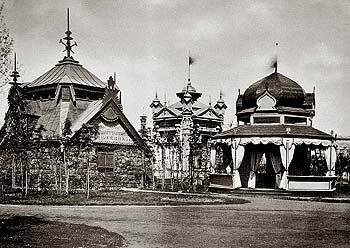Gold is symbolic of Jesus' kingship.
Frankincense is an aromatic gum resin from the scraggly boswellia tree (below left, the flowers and branches of the boswellia sacra from which most myrrh is derived) which grows in Somalia and in the southern Arabian peninsula. It is obtained by making a deep cut in the trunk of the tree, which exudes a milky juice that on exposure to air hardens into semi-opaque whitish lumps. This substance was ground into powder and burned as an incense in Temple ritual, giving off an odor like balsam. It thus denotes Jesus' future priesthood. From ancient times through the Middle Ages, frankincense was a principal Arabian trading commodity. In the ancient world it was used for religious and medicinal purposes; today, it is an ingredient in incense and perfumes.
Myrrh (above right) is a reddish-brown resinous material, the dried sap of a number of trees, but primarily from Commiphora myrrha, which is native to Yemen, Somalia and the eastern parts of Ethiopia, and Commiphora gileadensis, which is native to Jordan. The sap of a number of other species is also known as myrrh, including labdanum, an aromatic gum exuded from the leaves of the Cistus Incanus Creticus or rock rose. Myrrh was used as an embalming ointment and as an incense at funerals and cremations. Its oil was used in beauty treatments and was sometimes added to wine and drunk to relieve pain. As a constituent of perfumes and incense, was highly valued in ancient times, and was often worth more than its weight in gold. In Ancient Rome myrrh was priced at five times as much as frankincense.


.png)






































